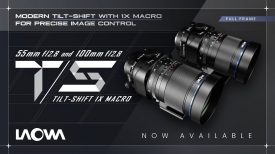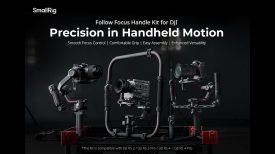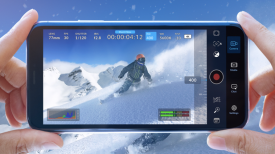Guest post by Jonah Kessel:

I went to Burma with a simple task: to investigate challenges to Myanmar’s nascent model of democracy using the mining industry as a device to talk about bigger issues. Wait, that wasn’t simple at all. In fact, that was very complicated. However, my second goal of the trip was simple: to field test the Canon C100 in a large variety of environments in a real world context. This would be the opposite of a desk test.
When I first tried the Canon C300 my DSLR was instantly jealous. However, at the $16,000 benchmark, I realized it wouldn’t be a game changer for most. It wasn’t till I got my hands on the Canon C100 that I knew the DSLR had become outdated.
I’ll break this conversation down into (1) price, (2) functionality, (3) image and (4) complaints.
Myanmar Emerges: Poisoned Hope from GlobalPost on Vimeo.
1. PRICE (based on B&H pricing):
At NAB 2013 I heard a tremendous amount of people saying things like: “I wouldn’t buy a camera right now. There’s too many choices and things are changing too fast.” The person would inevitably follow that statement with something like, “The only camera I really need to own right now is my 5D. For everything else, I’ll rent…” While there is an element of intelligence to this statement, in other ways, it doesn’t make that much sense.
In many ways, the C100 is cheaper than the 5D Mark III … at least if you want your 5D to perform like the C100.
My basic 5D setup costs:
- 5D Mark Mark III – $3500
- Letus MCS Action Cam– $1800
- juicedLink RM333 Riggy Micro Low-Noise Preamp – $400
- Zacuto EVF – $750
- Schneider Variable ND system – $600
I’m leaving out things that you would or might need for both cameras i.e. lenses, mics, a follow focus, stabilization devices or cool stickers. The bottom line is, to make a 5D function similarly to at C100, you might spend $7,050. However, the C100 only costs $5,500. While the initial price tag of the camera body is a bit higher, to make your 5D or other DSLR perform as a video camera properly, it will actually cost more than the C100.
But better than this is the fact that the C100 was specifically designed to shoot like a video camera, without any adapting.
Myanmar Emerges: Dreams to Dust from GlobalPost on Vimeo.
2. FUNCTIONALITY
Traveling in Burma can be a bit difficult. Foreigners are restricted in the places they can go and military check points are abundant once you leave touristy areas. Essentially, a rosy picture of democracy has been painted for tourists willing to come here and pay exorbitant prices for hotels. This isn’t to say things aren’t improved. They are, but democracy, as we know it, is still an idea here.
I was shooting in places I wasn’t supposed to be — and at times, during protests with military and police ready to shoe me off. At other times, our subjects were afraid to talk to us or we had very limited time to shoot before they decided they shouldn’t be talking to us. The last thing I want in this type of quasi-undercover investigative video journalism environment is to have a setup which requires lots of add ons or different pieces.
Simply put, there’s just less things that can go wrong using the C100 than with a DSLR setup. Having a single unit feels much more solid than a camera with lots of different devices attached to it. In the event I have to run or move quickly, this is a very desirable. In trying to keep a low profile, a C100 is simply less intimidating than a loaded 5D (to both police and subjects).
Beyond the fact the camera is quasi-ready to shoot out of the box, I believe the biggest asset of this camera is its size. It literarily, fits in the palm of your hand.

Working solo without a production assistant and trying to blend in as much as possible in a country where I physically look very different than everyone, I tried to slim down to a believable tourist sized setup. My f-stop Kenti pack held a C100, 5D Mark III, 70-200mm f/2.8, 24mm f/1.4 and a 16-35mm f/2.8, along with an audio setup.
But it’s not only that it’s small — but small and extremely functional.
During my test of the C100 I used no devices for stabilization (beyond a tripod). I think there is a sweet spot with this camera in relationship to weight and size when it comes to hand holding. Over time I’ve grown to really like handheld footage but, as we all know, there is good shake and bad shake (although some will tell you, all camera shake is bad). For me, the size and weight of the C100 allows you to hand hold and achieve good shake, without a shoulder rig. While I find the C300 a bit heavy to really hand hold for more than a couple seconds, the 15% smaller C100 feels very natural.
Beyond its size, any user will quickly see the benefits of moving off of a DSLR.
The built-in ND filters of the C100 made my workflow much quicker and easier. My DSLR system requires me to change out my ND filter with every lens change. Its very time consuming and for news and documentary you often end up sacrificing your control of depth of field or image quality. The C100’s built-in ND system solves this problem for people who shoot real world environments. This feature alone, in my mind, is worth the move from DSLRs.
In the audio world, there’s the obvious benefit of two XLR inputs. However, a less publicized comment is the top handle’s built in microphone. I found it far superior to any DSLR internal microphone. For the four videos here, all of the natural sound was recorded with the top handle/internal microphone (interviews all have audio from Sony UWP wireless lavs direct to camera).

Moving from a DSLR LCD to the C100’s LCD, you have much more advanced vector monitoring abilities. Given the placement of the screen, that’s pretty important. Unlike on the the C300 or C500, the monitor here is not so flexible in terms of placement. Its more like the 60D’s LCD but with added capabilities.
The customization within the LCD is very awesome. If you happen to be color blind, like me, its easy to create custom peaking and zebras. Or custom peaking during magnification mode. This means users have the option of changing the color and the width of these focusing assistants.
By far the most useful thing to me on the LCD is the waveform monitor. There were plenty of times when I got stuck shooting at midday and it became very hard to see the LCD. Nearly the entire movie above (Dreams to Dust) was shot in places where I could barely see the LCD. Here the waveform monitor made it fairly simple to keep exposure levels correct.
Working independently in sensitive scenarios and shooting with less than ideal light, the functionality of this camera made me feel more mobile than I ever have on this type of assignment. This defines the camera for me: Its ultra portable, functional, and the image output is a big step up from a DSLR, for a lower price.
Myanmar Emerges: Resource Righteousness from GlobalPost on Vimeo.
3. IMAGE
The main video of this series (at the top of this post) starts with a minute of cell phone footage I dug up while reporting in Burma. However, at 5:45 there’s also a little bit of DSLR footage I licensed from a freelancer. There is a stark difference in image quality as soon as those shots come in.
There’s something about the image from Canon’s C series cameras that simply looks “less digital.” Perhaps its the fact that they let you perform better, easily maintaining a 180 degree shutter rule in difficult environments. Or perhaps its the wider dynamic range the sensor lets you achieve — but the image does looks different.
This was my first assignment where I could really push the ISO range of a C series body as well. Its actually hard to compare it to the DSLR world because you can shoot at incomparably higher ISOs. You’ll get noise, but the noise looks different.
Beyond its ability to hold image quality with poor light, the areas where I find the picture to be much better than a DSLR come in noise and sharpness. Images come out of the C100 strikingly sharper than that of a 5D Mark III or D800.
These videos were filmed using Canon’s wide dynamic range color profile. You can see on some images, particularly in the introduction to Dreams to Dust or in the video below, We Never Agree, I’ve applied relatively major grades to parts of the videos — without much noise, banding or other artificial marks in pixel damage.
Myanmar Emerges: We Never Agree from GlobalPost on Vimeo.
4. ITEMS OF CONTENTION
No good review would be complete without addressing the problems and issues. This camera certainly has points which could be stronger.
The EVF is small. You might call it very small. And while I can say, I did get used to it, it would certainly make sense to have a better one. I know a lot of C100 users who are just replacing their’s off the bat. That doesn’t say much about this piece of the camera.
Another item of contention is the output format. The C100 outputs AVCHD, which is a bit clunky and, quite simply, not that great. While you can get an external recorder and output ProRes 4:2:2, I’ve been using ClipWrap and just dealing with an extra step. But I question how much of a problem this actually is for people who shoot for web.
NAB 2013: NAB 2013: Schneider Releases iPro Series 2 Lenses for iPhone from Dan Chung on Vimeo.
At NAB 2013, my team shot with a Canon C300 and Canon C100. All of the tight shots were made with one camera, and all of the wide shots with the other. Can you tell which one is which? My team put out about 20 videos, but I’ll just place one above here as an example. See if you can tell the difference given this compression and viewing medium. Then, see if you can see a $10,000 difference…
For some shooters the bit rate is a problem. The C100 shoots at 24 Mb/s while its big brother the C300 can shoot at broadcast safe 50 Mb/s. For people like myself that shoot entirely for web, this doesn’t matter so much and there has been some high profile examples of these cameras being used for broadcast.
5. CONCLUSION
I won’t be the first to say it but, at this price point, the C100 certainly makes me question the future of DSLRs for people whose primary use is video.
It does have things that aren’t perfect about it but, for me, the benefits far outweigh the negatives by an enormous margin. While the C300 is without doubt a better camera, I’m not convinced its the best camera for people like me. For people who shoot for the web, for people who deal with real world shooting environments or for people who are trying to keep their profile low and gear size down — this camera is not only priced right, but it functions right.
The name of this site didn’t change for nothing…
– Myanmar Emerges is a year-long investigation by Global Post into Myanmar’s claims to democracy. Part one of the series can be seen here. Look for parts two and three coming this summer and fall.
– Jonah M. Kessel is a Pulitzer Prize-winning visual journalist and cinematographer based in Beijing, China. He covers China for the video desk of the York Times’ and makes videos and photos for newspapers, magazines, multinationals, nonprofit and governmental organizations around the globe. He always wants to know whats on the other side of the mountain, regardless of what side he’s on. See his site here, blog here or keep up with him on Twitter here.





